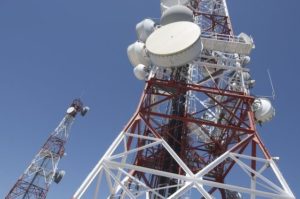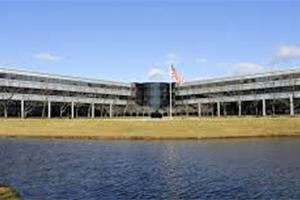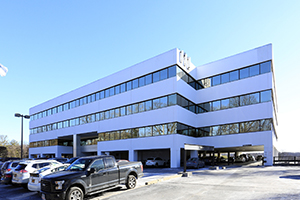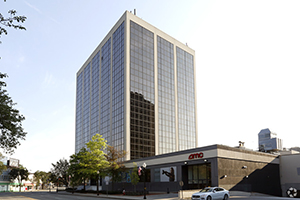Wireless Antenna Facility Modifications: Part I, Vexing Issues
This two-part article will describe recent FCC actions to promote wireless technology deployment. This first article will provide an overview of Section 6409(a) of the 2012 Middle Class Tax Relief and Job Creation Act, and some of the troubling issues that have come to the fore.
By Gregory D. Meese and Edward W. Purcell | December 30, 2020

Pedro Salaverria
The Federal Communications Commission’s (FCC) Chairman Ajit Pai has said that the “FCC should facilitate, rather than frustrate, innovation.” The purpose of this two-part article is to describe recent FCC actions to promote wireless technology deployment by clarifying rulings related to Section 6409(a) of the 2012 Middle Class Tax Relief and Job Creation Act. (The FCC refers to this as the Spectrum Act.)
This first article will provide an overview of Section 6409(a) and some of the vexing issues that have come to the fore as a result of municipalities’ and carriers’ experience implementing its provisions. The second article will provide an overview of two recent FCC Orders that respond to these issues and provide clarity as well as further constraints on local government review of minor wireless facility modifications.
Section 6409(a) was enacted to streamline state and local government review of requests to modify existing wireless communications facilities. Section 6409(a) provides that “a State or local government may not deny, and shall approve, any eligible facilities request for a modification of an existing wireless tower or base station that does not substantially change the physical dimensions of such tower or base station.” 47 U.S.C. §1455(a)(1). In 2014, the FCC adopted an order (the “2014 Order”) to interpret §6409(a) and to establish rules to guide its implementation. 47 CFR §1.6100; IMO Acceleration of Broadband Deployment by Improving Wireless Facilities Siting Policies, WT Docket No. 13-238 and 13-32, WC Docket No. 11-59, Report and Order, 29 FCC Rcd 12865, 12922-66, paras. 135-241 (2014) (2014 Infrastructure Order), aff’d, Montgomery Cty. v. FCC, 811 F.3d 121 (4th Cir. 2015) (the “2014 Order”).
Pursuant to the 2014 Order, the FCC defined the term “eligible facilities request” as “[a]ny request for modification of an existing tower or base station that does not substantially change the physical dimensions of such tower or base station, involving: (i) Collocation of new transmission equipment; (ii) Removal of transmission equipment; or (iii) Replacement of transmission equipment.” 47 CFR §1.6100(b)(3).
The FCC also set quantitative standards as to what would be considered a “substantial change” under Section 6409(a). For example, the FCC stated that a modification of a tower outside of the public rights-of-way would cause a substantial change if it “increases the height of the tower by more than 10% or by the height of one additional antenna array with separation from the nearest existing antenna not to exceed twenty feet, whichever is greater.” 47 C.F.R. §1.40001(b)(7)(i). With respect to equipment modifications, the 2014 Order states that substantial change would exist where “for any eligible support structure, it involves installation of more than the standard number of new equipment cabinets for the technology involved, but not to exceed four cabinets; or, for towers in the public rights-of-way and base stations (i.e., other than tower facilities), it involves the installation of any new equipment cabinets on the ground if there are no pre-existing ground cabinets associated with the structure, or involves the installation of ground cabinets that are more than 10% larger in height or overall volume than any other ground cabinets associated with the structure; or entails any excavation or deployment outside the current site.” 47 C.F.R. § 1.40001(b)(7)(iv).
The 2014 Order also held that a “substantial change” would occur if the installation would “defeat the concealment elements of the eligible support structure” or “it does not comply with conditions associated with the siting approval of the construction or modification of the eligible support structure or base station equipment, provided however that this limitation does not apply to any modification that is noncompliant only in a manner that would not exceed the thresholds identified” in the Order. 47 C.F.R. §1.40001(b)(7)(v)-(vi).
While the 2014 Order provided some substance to Section 6409(a)’s command that a “State or local government may not deny, and shall approve, any eligible facilities request for a modification of an existing wireless tower or base station that does not substantially change the physical dimensions of such tower or base station,” certain issues have become apparent when applying these provisions to real world facility modifications. These issues generally fall within six categories.
First, municipalities and carriers have argued about what types of information can be required as part of a Section 6409(a) application and when the applicable 60-day shot clock starts. These are really tandem issues because, oftentimes, a municipality will not act on an application until same is deemed “complete” and all requested information has been provided. Although the 2014 Order did speak to this issue, confusion remained. The 2014 Order provides that when an applicant “asserts in writing that a request for modification is covered by Section 6409(a), a state or local government may require the applicant to provide documentation or information only to the extent reasonably related to determining whether the request meets the requirements of this section.” See 2014 Order at 214. A state or local government may not require an applicant to submit any other documentation, including but not limited to documentation intended to illustrate the need for such wireless facilities or to justify the business decision to modify such wireless facilities. Id.
In practice, many municipalities were unwilling to simply issue necessary zoning permits upon request and instead required that formal site plan and variance procedures be followed. Furthermore, and as referenced above, many municipalities hinged completeness determinations on information far beyond what is necessary to determine whether or not a carrier proposed a “substantial change.” In such instances, the question arose as to whether the shot clock started upon the initial request for a zoning permit, the filing of a variance or site plan application, or upon a completeness determination.
Second, many municipalities and carriers have been confused as to how to calculate tower height increases pursuant to 47 C.F.R. §1.40001(b)(7)(i) which, again, provides that a modification of a tower outside of the public rights-of-way would cause a substantial change if it “increases the height of the tower by more than 10% or by the height of one additional antenna array with separation from the nearest existing antenna not to exceed twenty feet, whichever is greater.”47 C.F.R. §1.40001(b)(7)(i). Because the 2014 Order didn’t direct how to measure antenna separation, municipalities and carriers had been left to argue about whether to measure from the top or bottom of antenna arrays, the length of which themselves can be five to 10 feet tall.
Third, municipalities and carriers have argued over whether and how to include small ancillary equipment, like remote radio heads and amplifiers, into the volume limitations for cabinets set forth in the 2014 Order. Some municipalities have required carriers to calculate the volume for these types of equipment and some have not.
Fourth, it has been difficult to come to a clear understanding as to what type of facility modification would “defeat the concealment elements of the support structure” and cause a substantial change. It is not surprising that this has become an issue because, of all 2014 Order directives, this is probably the most subjective.
Fifth, there has also been a number of disputes related to whether a proposed modification would “comply” with the initial conditions of approval. After the 2014 Order, some municipalities began to impose questionable conditions in their new tower approvals, such as a condition that no further changes or collocations be made without further board approval. These types of conditions are problematic for carriers because, on their face, they attempt to nullify a clear dictate of the 2014 Order and require the disapproval of an eligible facilities request that would otherwise be required to be approved.
Sixth, carriers have consistently pushed for relief that would allow them to add backup power generators and other equipment and have sought a broader interpretation of “entails any excavation or deployment outside the current site.” Since the 2014 Order’s issuance, carriers have been unhappy with the constrained language related to equipment deployment. On the whole, carriers have argued to the FCC that they should be permitted to expand their equipment to the limits of any leased space because, as drafted, the 2014 Order holds that any deployment outside of the current fenced in site would be a “substantial change” and would not trigger the automatic approvals of Section 6409(a).
The above issues have vexed carrier and municipality alike. Consequently, and to the relief of legal practitioners, the FCC acted to resolve these questions by way of two declaratory rulings in 2020. The first declaratory ruling, issued on June 10, 2020, clarified the first five issues set forth above (“June Order”). IMO Implementation of State and Local Governments’ Obligations to Approve Certain Wireless Facility Modification Requests Under Section 6409(a) of the Spectrum Act of 2012, WT Docket No. 19-250 (June 10, 2020). The second declaratory ruling, issued on Nov. 3, 2020, resolved the last issue related to equipment deployment (“November Order”). IMO Implementation of State and Local Governments’ Obligations to Approve Certain Wireless Facility Modification Requests Under Section 6409(a) of the Spectrum Act of 2012, WT Docket No. 19-250 (Nov. 3, 2020).
The June Order and November Order will be the subject of our second article.
Gregory D. Meese is a principal of Price, Meese, Shulman & D’Arminio, P.C. He is a former Chairman of the Board of Directors of the NJSBA Land Use Law Section, Counsel to the Builders Association of Northern New Jersey, and Co-chair of the Environmental Law Section of the Bergen County Bar Association. He is also the editor of the annual Land Use Citator.
Edward W. Purcell is an associate at the Price Meese, concentrating his practice in the areas of land use, planning and telecommunications law.
Reprinted with permission from the December 30, 2020, issue of the New Jersey Law Journal. Further duplication without permission is prohibited. All rights reserved. © 2020 ALM Media Properties, LLC.






